Loch Ness: The Mysteries, Forklore, and Magic of Scotland’s Legendary Lake
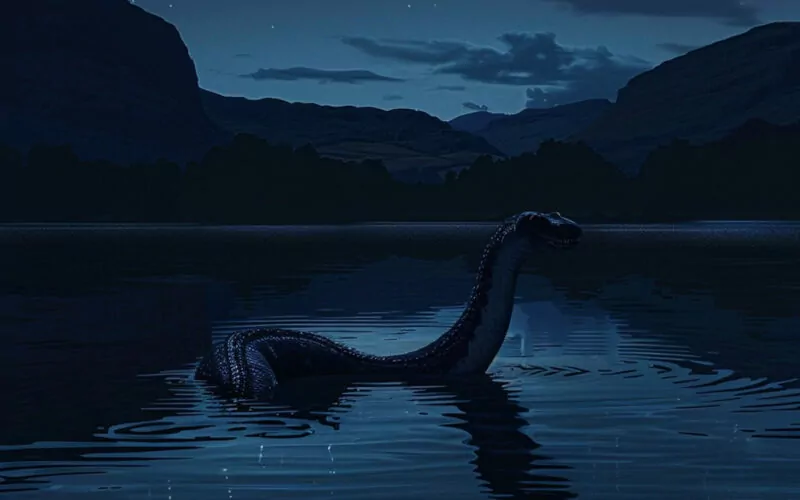
One of the first things that comes to mind when someone mentions Loch Ness is the creature that rules over the loch. This mythical beast, affectionately known as Nessie, has captivated the imaginations of locals and tourists alike for centuries, making the lake (loch) a hot spot for those visiting Scotland.
Located in the Scottish Highlands, southwest of Inverness. Loch Ness is an expansive body of water with a depth of over 700 feet and a length of about 23 miles. It’s named after the River Ness, which flows from the northern end.
Between its massive size, coupled with its fark and often foggy surface, it’s not surprising that legends of what lurks beneath the water exist. The legend of the Loch Ness Monster has seen a resurgence recently, with several alleged sightings reported in the media. One such report described a mysterious creature darting through the waters “like a torpedo.”
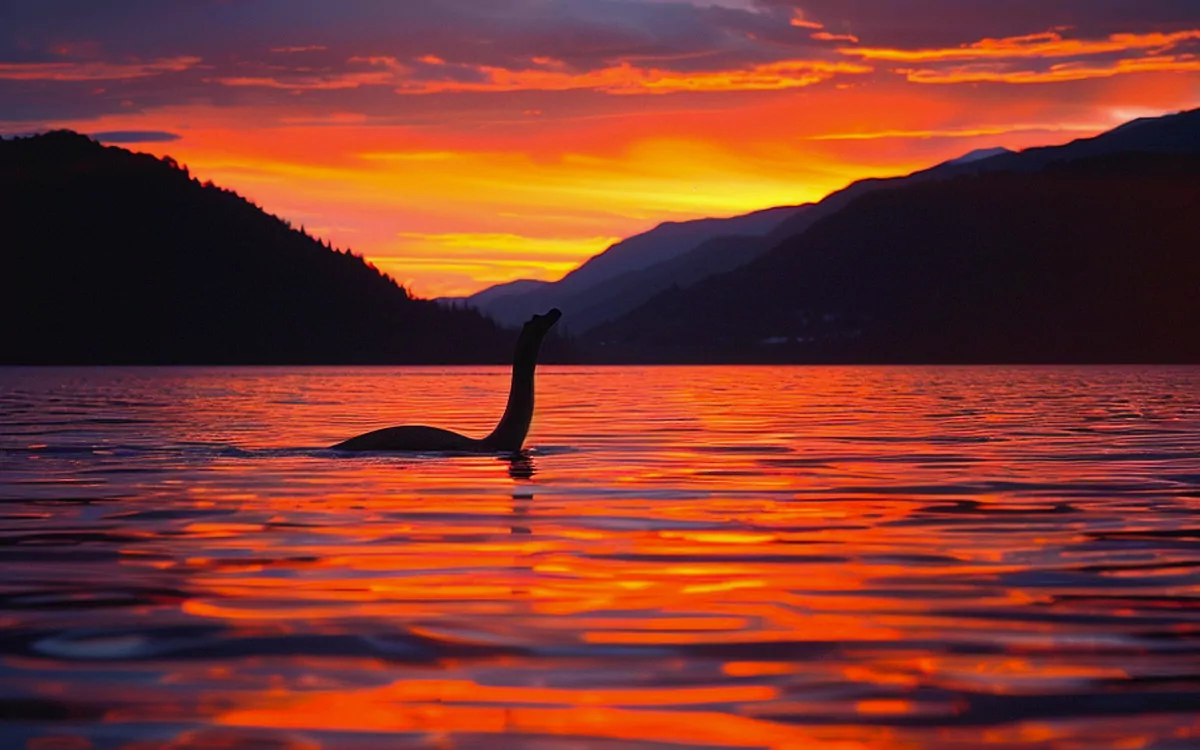
The Mystery of Loch Ness
When talking about Loch Ness, one doesn’t simply miss out on talking about the famed creature. The mystery behind Loch Ness goes centuries back and continues to be told today. Affectionately referred to as Nessie, the mythical creature is described as large and long-necked. While the legend is said to go centuries back, it was only brought to the mainstream’s attention in the 1930s.
The earliest report of a possible Nessie sighting goes all the way back to 565 AD, in the Life of St. Columba by Adomnan. Another alleged sighting was reported in 1871/1872 by D. Mackenzie of Balnain. D. Mackenzie’s account would not be publicized until 1934. More than 10 years later, in 1888, a mason named Alexander Macdonald of Abriachan also alleged to have seen a creature surfacing from the loch.
Fast forward to the most famous account of Aldie Mackay. In 1933, in an article by Alex Campbell for The Inverness Courier, Mackay claimed to see a large “beast” or “whale-like fish” rolling in the water in the loch while she and her husband John were driving on the A82. This was said to be the first time the alleged creature was referred to as a “monster.” However, some reports claimed that editor Evan Barron first used the term for the creature.
The latest sighting was in September 2021, of a 20-foot creature allegedly appearing by a drone near the loch on a live stream.
However, the scientific community has since explained that the alleged sightings of Nessie are nothing but hoaxes. This conclusion comes after years of investigations and searches to find proof of the creature.
The Folklore and Legends
Much of the folklore associated with Loch Ness, aside from Nessie, surrounds the origin of the loch’s name. As we said earlier, Loch Ness is named after the River Ness flowing from the northern end. The river’s name likely comes from an old Celtic word which means “roaring one.”
In the 1893 book by William Mackay, titled Urquhart and Glenmoriston: Olden Times in a Highland Parish, two Scottish legends are said to have been the origin.
The first legend follows a spring in a valley that was enchanted for purity by the Daly the Druid. In this legend, Daly enchanted the spring with the condition that the well opening must be covered by a stone whenever it’s not used. Otherwise, “desolation will overtake the land.” However, one day, a woman left the well uncovered while she sought to save her child from a fire.
Because of this, the water overflowed and filled the vale, which resulted in the loch. It would then be named “Loch Nis.”
The second legend is referred to as “The Tales of the Sons of Uisneach” by Mackay. An Irish woman, Deirdre, considered to be “the most beautiful woman of her age,” was courted by the king of Ulster, Conachar MacNessa. Deirdre instead fell in love with his cousin Noais, the son of Uisneach. The two fled to Scotland and got married on the banks of the loch until MacNessa killed Noais.
Despite the two legends, Mackay said that neither is the true origin of the loch’s name. Instead, Mackay said that the Celtic word “Ness” came from the earlier words for “river.”
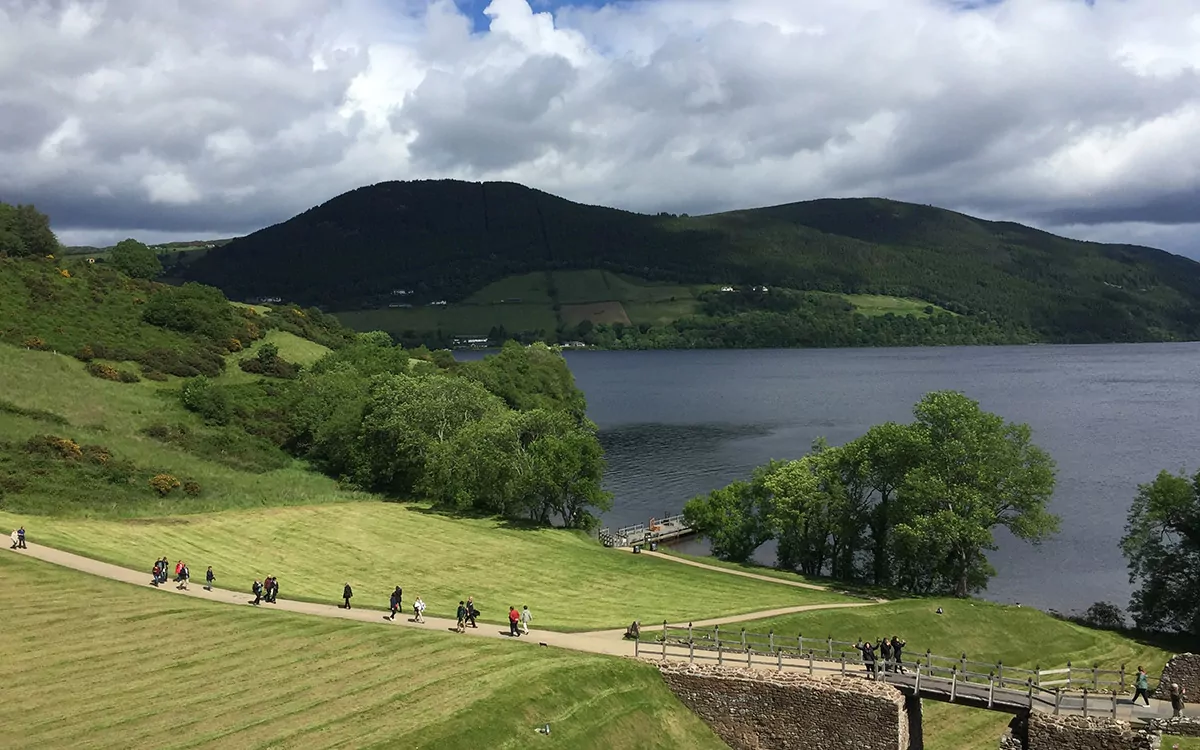
The Natural Beauty of Loch Ness
Loch Ness, Scotland, is connected to other bodies of water. The River Ness is at its northern end, while the southern end is connected to the Loch Oich by the River Oich. This part makes up a section of the Caledonian Canal. Through the River Ness is the Loch Dochfour, which ultimately leads to the North Sea through the Moray Firth.
Loch Ness is also the second-largest loch in Scotland by surface area after Loch Lomond. However, it is the largest by volume when it comes to depth. The deepest point of Loch Ness is 230 meters or 755 feet. This depth makes Loch Ness the second-deepest loch in Scotland after Loch Morar.
This loch is also the largest body of water in the Great Glen, running from Inverness to Fort William. It also contains an artificial island called Cherry Island in the southwestern end.
The watershed of Loch Ness spans over 700 square miles. It’s made up of several rivers, including the Oich and the Enrick. It’s common to see surface oscillations caused by differential heating in the loch. The loch’s scanty flora can be attributed to the rise and fall of the level of the loch. It can also be attributed to the loch’s depths near the shoreline.
Additionally worth noting, Loch Ness is surrounded by nine villages, including Urquhart Castle, and the Drumnadrochit village has the Loch Ness Centre. Both of these are worth a visit if you’re visiting the loch or taking a boat ride on the loch. There’s more about each of them below.
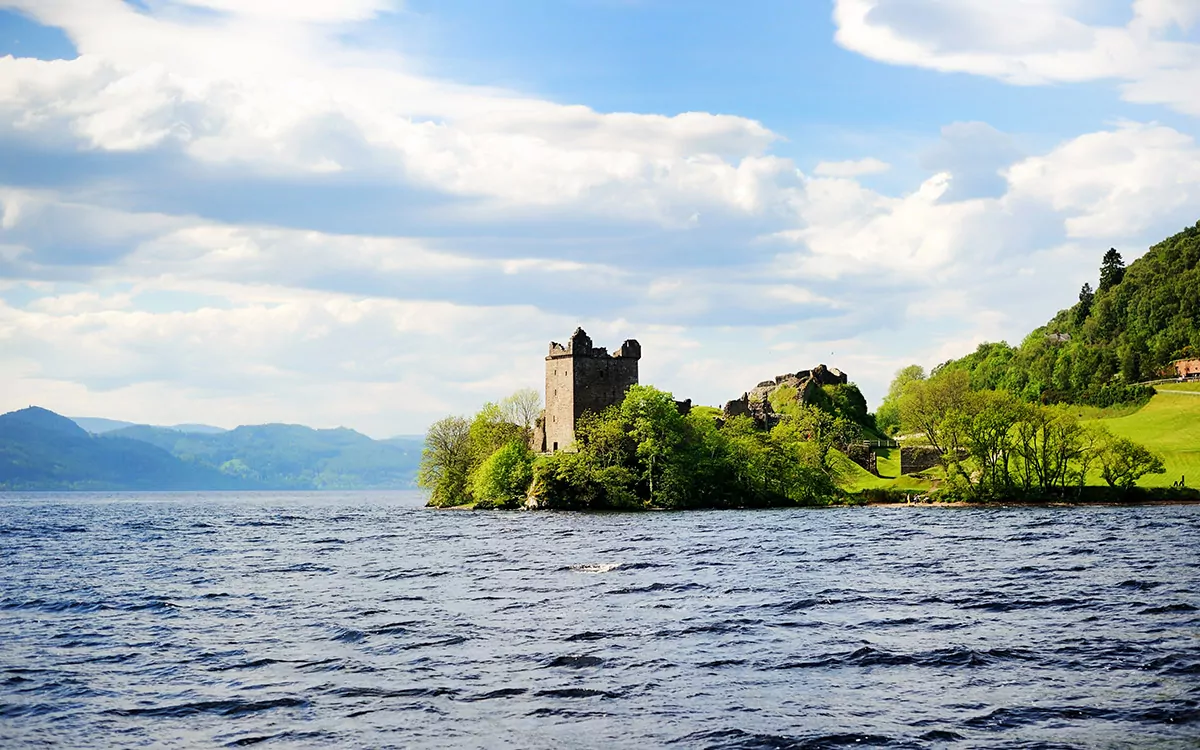
Activities and Attractions Nearby
Aside from maybe waiting for a sign of Nessie, there are plenty of things to do when in Loch Ness. There is an outdoor activity trail, the Loch Ness 360° Trail, for tourists to walk, run, or cycle around the entire Loch Ness. You can also tour the 60-mile Caledonian Canal, which cuts through the Great Glen and is absolutely stunning.
Tourists can also take a cruise in Loch Ness with a view of Urquhart Castle, where you may just find a sign promoting a cup of coffee with a little Baileys added (if you want to increase your odds of seeing Nessie). The tour we took dropped off at the shores of the castle. And we were able to explore the castle’s runes a bit.

If you’re visiting Drumnadrochit, they also have The Loch Ness Centre, where visitors can take a 45-minute tour with a theatrical presentation. The museum is absolutely worth visiting if you’re a fan of the Loch Ness Monster lore. And, if you’re looking for some fun Nessie souvenirs, this is definitely where you want to stop, as there are not many Nessie-themed items at the Urquhart Castle. In fact, when I visited, there were zero Nessie-themed items, which I found kind of shocking.
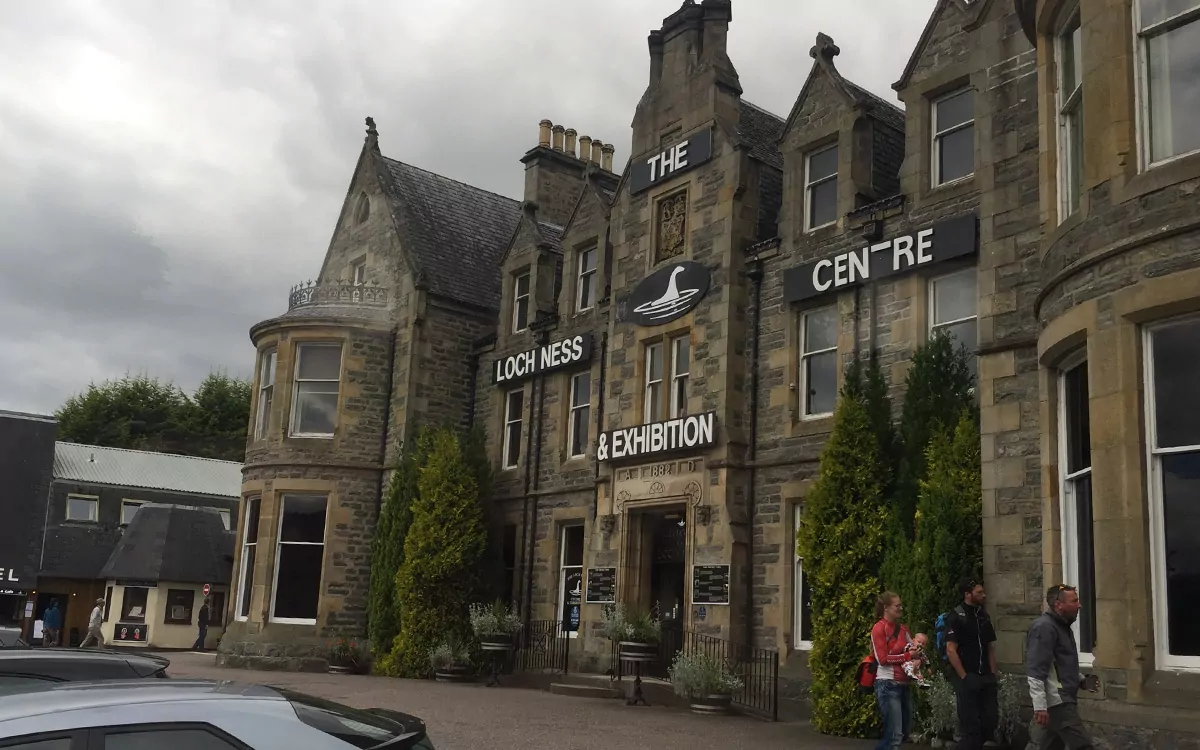
Other sights to see while in Loch Ness include the Falls of Foyers, the Corrimony Chambered Cairn, the Village Green, the Loch Ness Gallery, Nessieland, and St. Ninian’s Church.
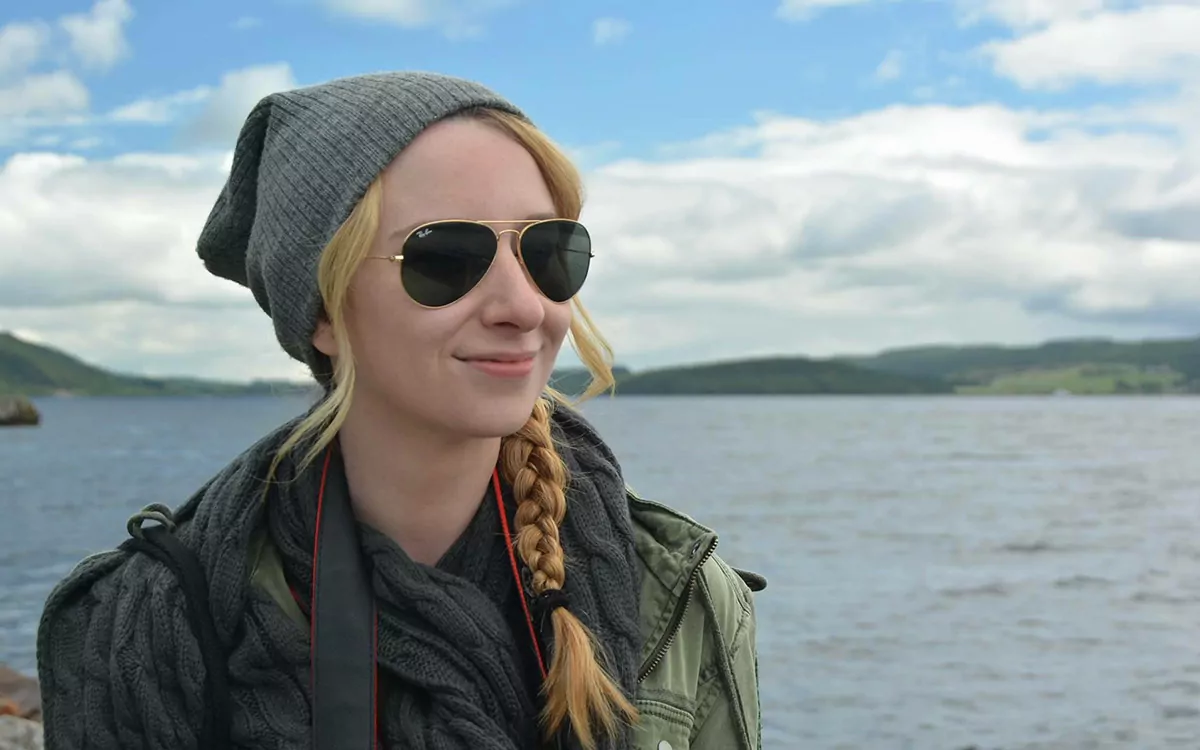
Geek Girl Travel: What Drew Me to Loch Ness
I had wanted to visit Loch Ness since I was a kid, largely due to the legends of the Loch Ness Monster. As a child who loved dinosaurs, the idea was thrilling. Maybe, somehow, a plesiosaur had survived and inhabited a loch in Scotland. As I got older, the idea of Nessie or Champ (a similar lake monster reported in Lake Champlain) evolved into folklore for me. I knew it was something that likely didn’t exist. However, a little part of me (and everyone who loves the legend) still hopes that such a creature could exist.
Regardless of your beliefs on the myth, the stories of monsters like Nessie and Champ are undoubtedly fascinating. They represent something larger, giving us a peak into the power of folklore and collective belief systems. These creatures, whether real or imagined, have left their mark on the cultural landscape. They’ve shaped local traditions, tourist attractions, and even the economy.
As an adult, visiting Loch Ness became less about spotting a legendary creature and more about experiencing first-hand the places that have fueled our imaginations and driven scientific debates for decades. Scotland, as a whole, is a beautiful country. And part of what makes it so enchanting is the rich folklore and myths, whether it’s Nessie or the stories of giants or fairies.
So, if you have the opportunity to visit Loch Ness (it’s a short drive from Inverness), don’t just come for the monster. Come for the breathtaking landscapes, the warm-hearted locals, and the vibrant history and legends that permeate every inch of the country.


Responses